Home / Best Landmarks in Saudi Arabia for First-Time Visitors
Saudi Arabia is full of places that tell stories. Some are very old and full of history. Others are new and show how fast the country is growing. From quiet mosques to giant cliffs and tall towers, every landmark feels different. For people visiting for the first time, it can feel exciting but also a bit confusing. There’s just so much to see. Some places make you think, others make you amazed. And a few will stay in your heart forever.
This guide will help you know about the best landmarks in Saudi Arabia and the ones you should not miss if it’s your first trip.
We’ll talk about why each place is special, what you can do there, and how it feels to visit.
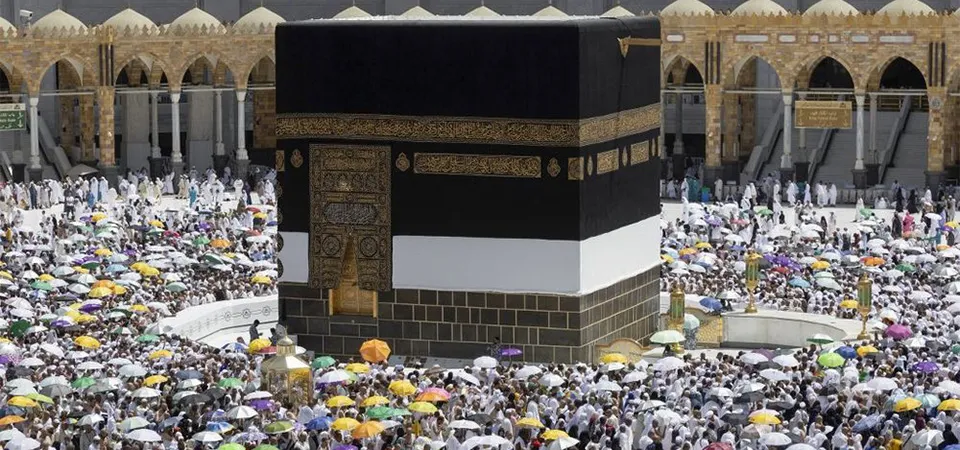
The Kaaba is the most sacred place for Muslims. It stands in the centre of the Grand Mosque in Mecca. Every Muslim faces the Kaaba during prayers, no matter where they are in the world. Millions of people visit it each year for the Hajj and Umrah journey, which are holy pilgrimages. During these visits, people walk around the Kaaba seven times, pray, and feel very close to their faith.
The black cloth that covers the Kaaba is called the Kiswah, and it is replaced annually with a new one. Being near the Kaaba gives a deep sense of peace.
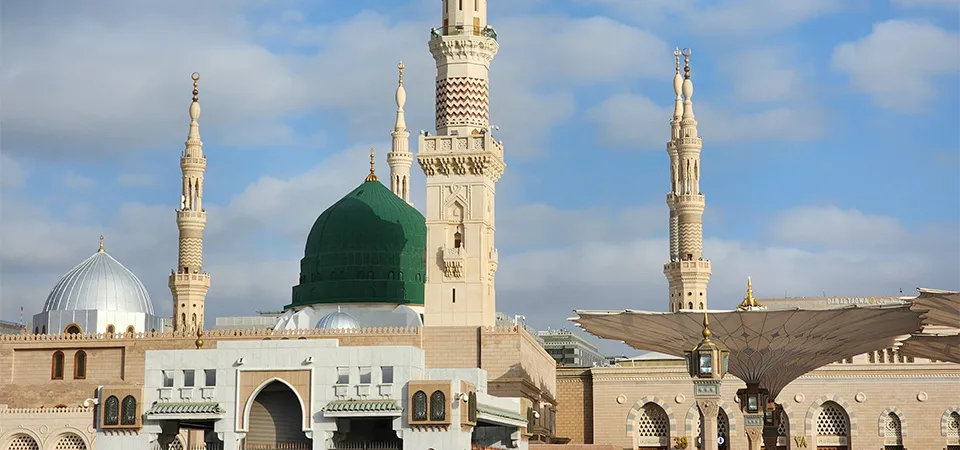
Al Masjid an Nabawi, also called the Prophet’s Mosque, is in Medina. It was built by Prophet Muhammad (peace be upon him) himself. It’s one of the largest mosques in the world and holds a very special place in the hearts of Muslims.
The mosque’s most famous part is the Green Dome, which stands above the Prophet’s resting place. It’s calm and beautifully designed, with white marble floors and tall pillars. Many people visit it to pray, learn, and feel close to the Prophet’s teachings. When you enter this mosque, the quietness and the soft light make you feel safe and thankful.
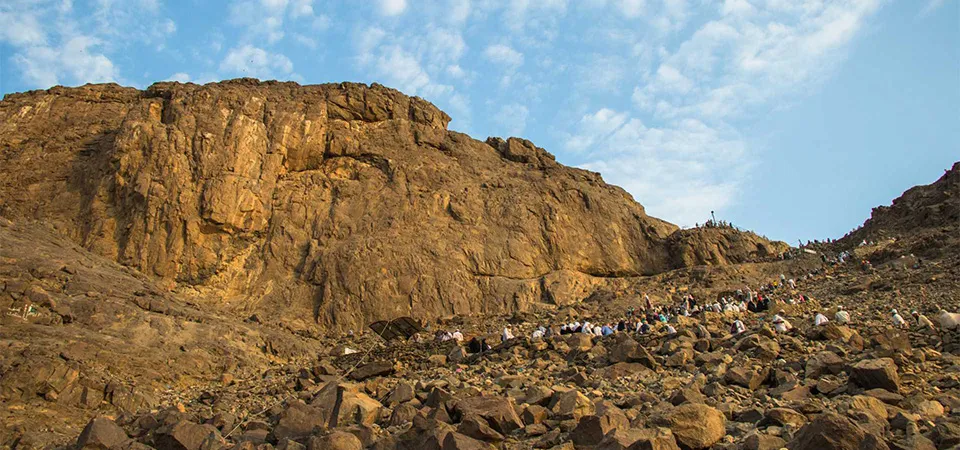
Jabal Al Nour means “Mountain of Light.” It’s located near Mecca and is one of the most visited mountains in Saudi Arabia. The mountain is famous because it holds the Cave of Hira, where Prophet Muhammad (PBUH) received the first revelation of the Holy Quran. Climbing this mountain takes time and effort. The path is steep, but many visitors say it’s worth it.
Reaching the top gives a wide view of Mecca, and standing near the cave feels emotional and powerful.
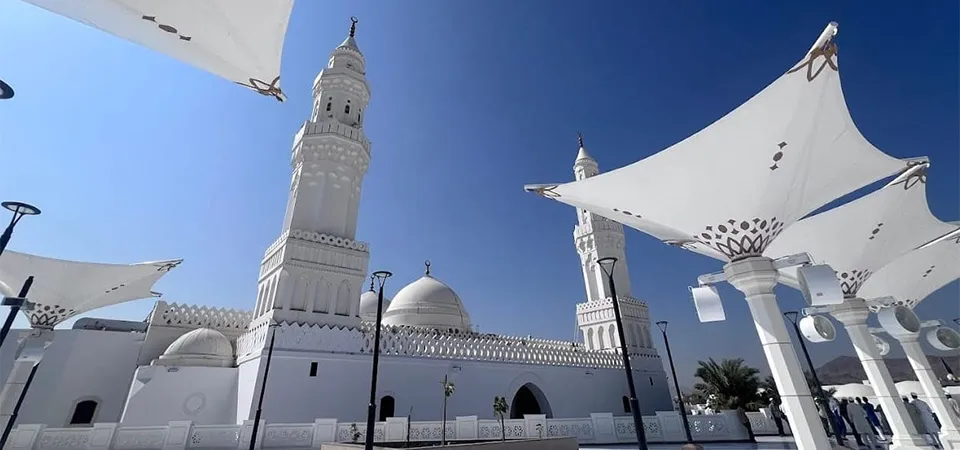
The Masjid al-Qiblatayn is known as the Mosque of Two Qiblas. “Qibla” means the direction Muslims face during prayer. In this mosque, something very special happened. At first, Muslims used to pray facing Jerusalem. But here, Allah commanded Prophet Muhammad (PBUH) to change the direction of prayer toward Mecca.
That’s why the mosque’s name means “two directions.” Visitors can still see two prayer niches (called mihrabs): one facing Jerusalem and one facing Mecca. The mosque is clean, white, and peaceful. It’s not very large but has significant meaning in Islamic history. For first-time visitors, this mosque teaches how one moment in history shaped all subsequent prayers.
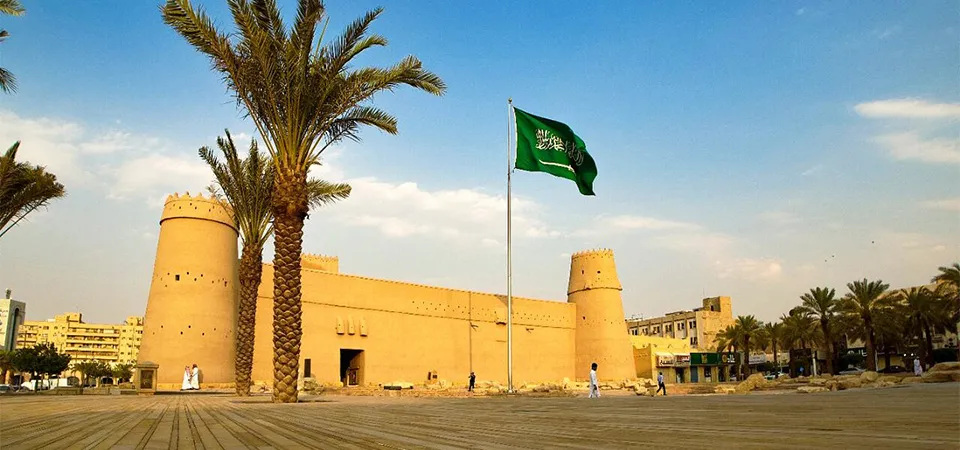
Masmak Fortress is an old clay and mud-brick castle in Riyadh, the capital city. It’s where King Abdulaziz Al Saud captured Riyadh, which marked the start of the modern Saudi state. The word Masmak means “strong” or “thick,” which fits the fort’s look: thick walls, tall watchtowers, and a heavy wooden door. Inside, there are old weapons, photographs, and traditional clothes.
Visitors can walk through narrow hallways, see the old jail room, and climb to the top for a great view. It’s a small museum now, but it holds big stories.
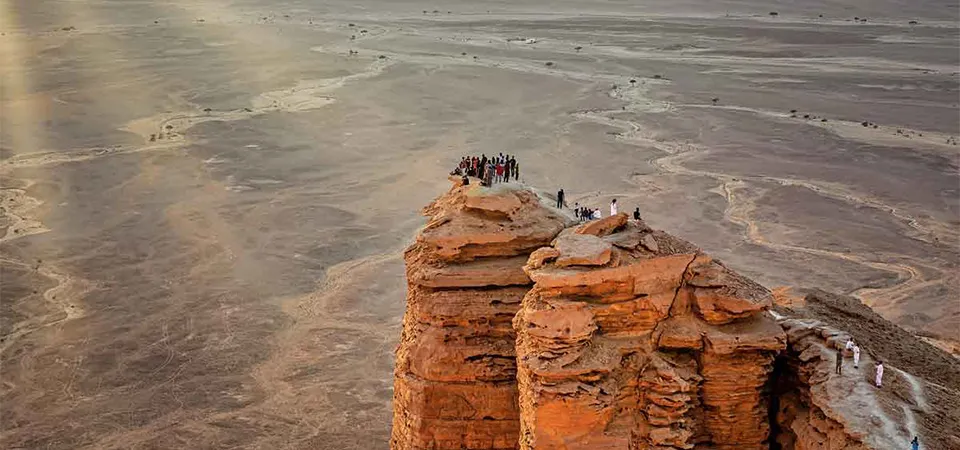
Edge of the World is a famous natural site near Riyadh. Its real name is Jebel Fihrayn, but everyone calls it the Edge of the World because the cliffs drop so suddenly that it feels like the planet just ends there. When you stand at the top, you see an endless desert. The silence is deep, and the wind feels strong and free. Many visitors come for hiking, camping, and photos. The road to reach it is rocky, so people usually use SUVs or 4×4 vehicles.
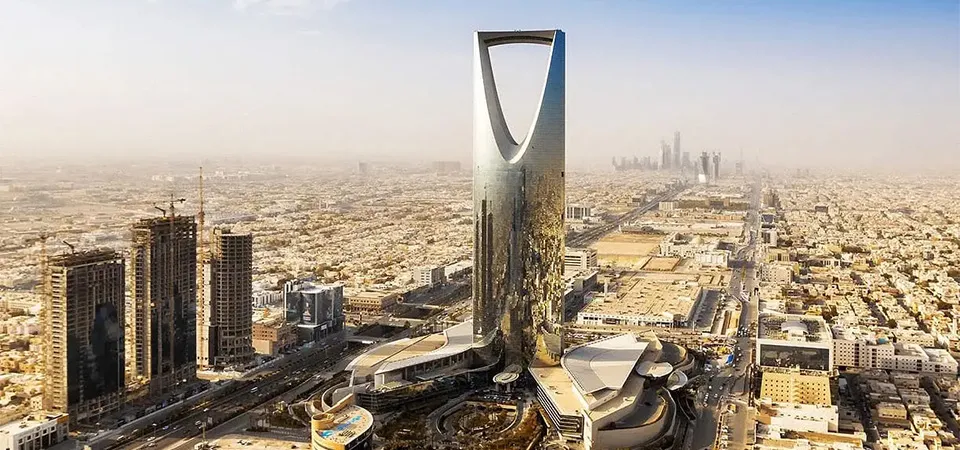
It’s easy to spot because it has a unique shape. At the top, there’s a Sky Bridge, a glass walkway connecting both sides of the tower. From the top, you can see all of Riyadh spread out below. The city shines beautifully at sunset and glows even brighter once night falls. Inside the tower, visitors can shop at a large mall, dine at various restaurants, or stay at the luxurious Four Seasons Hotel.
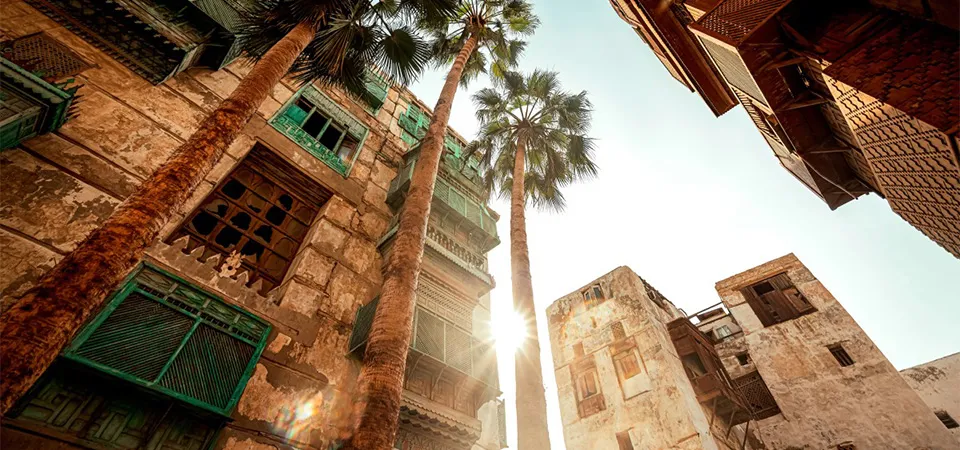
Al-Balad, which means “The Town,” is the old part of Jeddah. The narrow lanes, wooden balconies, and colourful doors tell tales of trade and travellers from long ago. This area used to be a busy market where ships came from all over the world. Today, it’s a UNESCO World Heritage Site. Many old buildings have been restored, and small shops sell traditional clothes, jewellery, and spices.
Visitors love taking photos here because every corner looks unique.
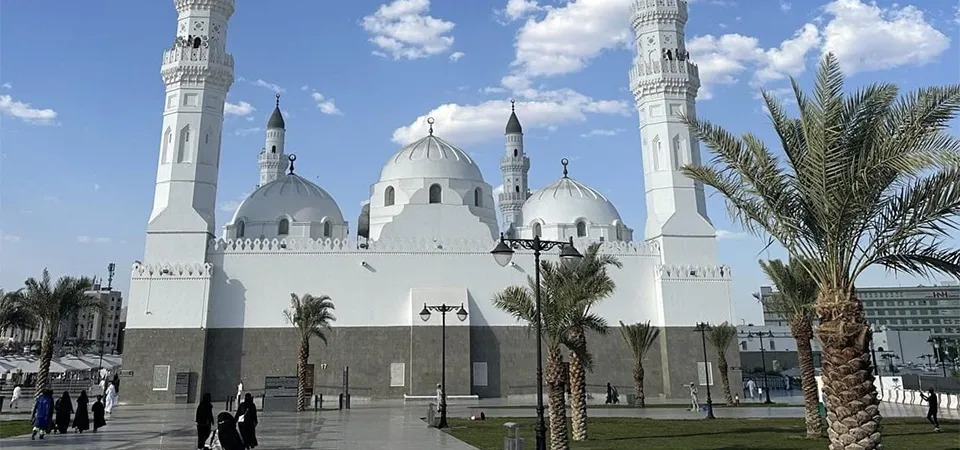
The Masjid Quba is the first mosque ever built in Islam. It’s located in Medina, just a few kilometres away from Al Masjid an Nabawi. The Prophet Muhammad (PBUH) himself helped in laying its foundation. That alone makes it one of the most respected mosques in the world.
The mosque is simple, white, and bright. It has big open spaces, clean marble floors, and vast domes that let the sunlight in. That’s why it feels calm, and people usually come here to pray or sit quietly for a while. Additionally, it is also believed that if you pray two units (rakats) in Masjid Quba, you get the reward of a full Umrah.
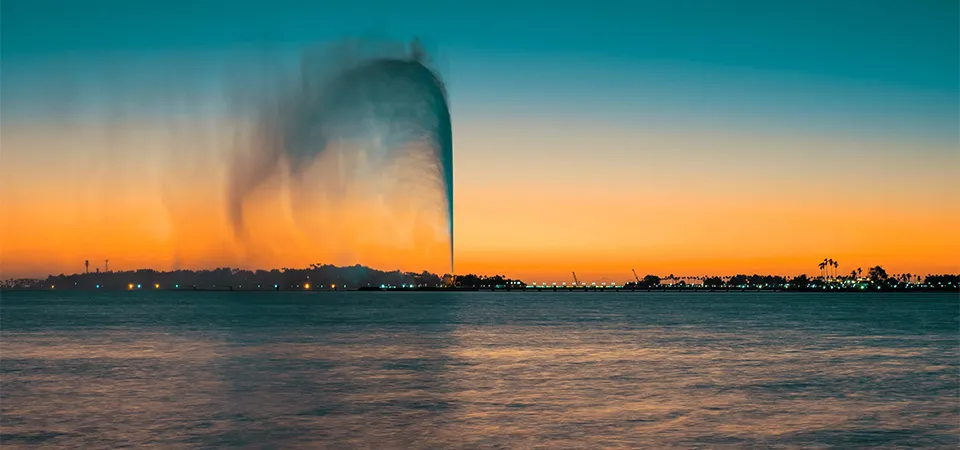
In the city of Jeddah, there’s something you can see from miles away, and that is King Fahad’s Fountain. It’s the tallest fountain in the world. The water shoots up to more than 300 meters, which is almost as high as the Eiffel Tower!
The fountain uses seawater from the Red Sea, and the pressure that sends it upward is extreme. At night, it lights up with hundreds of spotlights, making it look magical over the water.
People often gather near the Corniche (the walkway along the sea) to sit and watch the fountain.
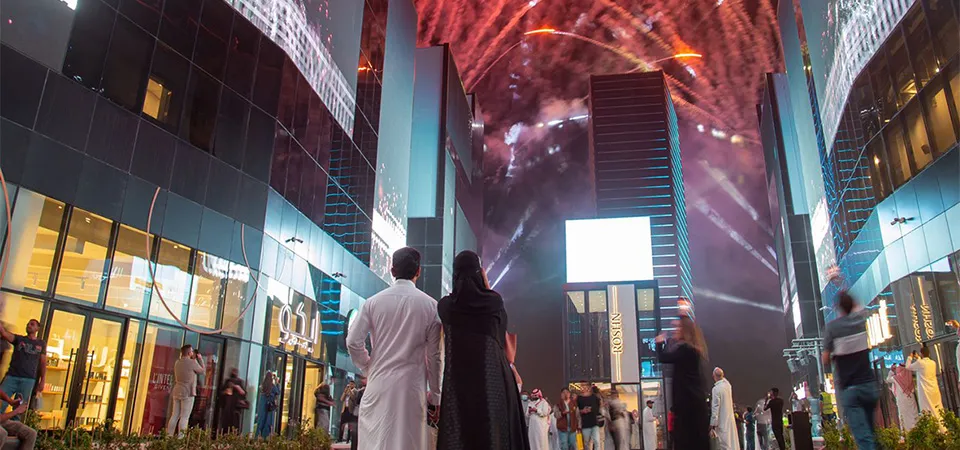
It’s one of the biggest leisure zones in Saudi Arabia. There are restaurants, shopping areas, live music shows, and even gaming zones. The area lights up beautifully at night. Families come to walk around, eat ice cream, and watch performances. During the Riyadh Season, the whole boulevard becomes even more colourful with fireworks, concerts, and art displays.
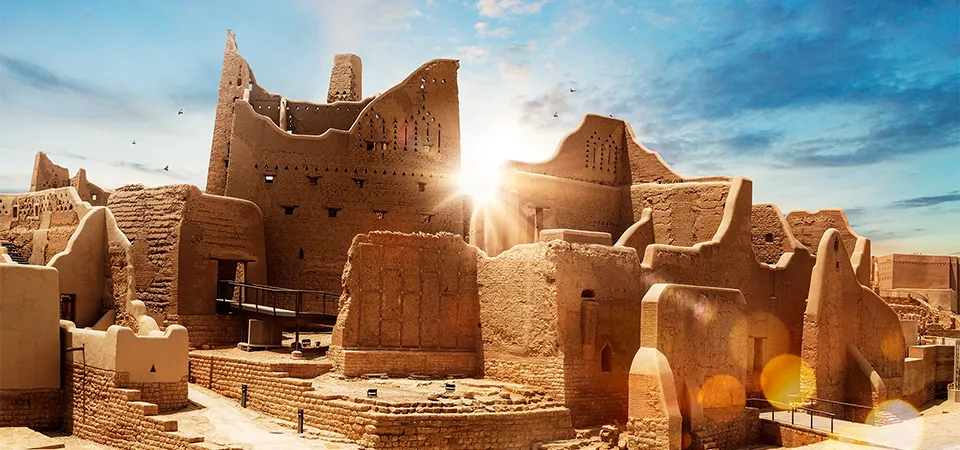
Diriyah is a historic town on the outskirts of Riyadh. It’s known as the birthplace of the Saudi state. The area was once home to the ruling Al Saud family before the capital moved to Riyadh.
The old part, called At-Turaif District, has mud-brick buildings and narrow lanes. Today, the government restored it into a heritage site filled with museums, restaurants, and walking paths. Visitors can see old palaces, mosques, and traditional Saudi designs.
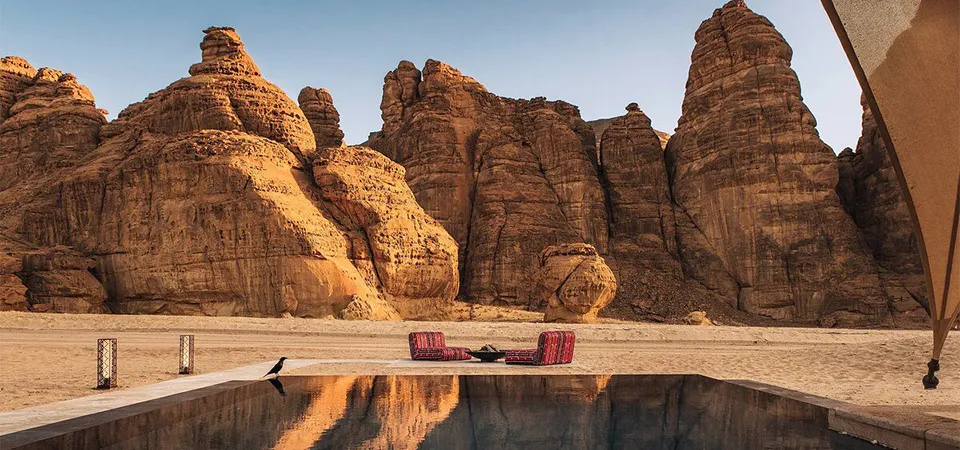
Al Ula is one of the most beautiful cultural spots in Saudi Arabia. It’s part of the AlUla region, surrounded by giant rock formations and desert valleys. The word Tantora means “sundial,” named after an old stone device that told time using the sun’s shadow.
Every year, Al Ula hosts the Winter at Tantora Festival, featuring music shows, hot air balloon rides, art exhibits, and light shows. The mix of desert nature and creativity makes it feel magical. Visitors often stay in eco-lodges or desert camps that let them experience quiet nights under the stars.
Visiting Saudi Arabia is like walking through time. One moment, you’re standing inside a centuries-old mosque built by the Prophet himself. Next, you’re on top of a modern tower looking over bright city lights.
For first-time visitors, every stop adds something new to the experience. You’ll also feel how much pride the country has in both its roots and its progress. Whether you go for religion, culture, or just curiosity, Saudi Arabia will surprise you. It’s a country that respects its past while shaping a bright future.
Yes, Mecca and parts of Medina are open only to Muslims because they’re holy cities. But non-Muslim visitors can freely explore many other landmarks like Diriyah, AlUla, and the Edge of the World.
Yes, some mosques allow non-Muslims to enter if they dress modestly and behave respectfully. But always check local rules first, because some mosques allow entry only to Muslims.
Yes, you can perform Umrah using a Saudi tourist visa! Just be sure to verify the latest official guidelines before travelling, as rules may change.
After performing Umrah, many pilgrims visit historical sites such as Masjid Quba, Uhud Mountain, and Al-Balad in Jeddah.
Yes, women can travel across Saudi Arabia and visit all public landmarks. The dress code is more relaxed now, but modest clothing is still recommended, especially near religious sites.
Most of them are! Families love places like Boulevard Riyadh City, King Fahad’s Fountain, and AlUla because they have open spaces, events, and safe walking areas for kids.
Saudi Arabia has established itself as one of the safest destinations in the Middle East, offering modern infrastructure and strong security for visitors.
You can travel by domestic flights, high-speed trains, or long drives. Saudi Arabia has developed a strong transport system, and clean highways connect all major cities.
Not always. Big cities like Riyadh or Jeddah have clear signs in English and Arabic. But for places like Hegra or the Edge of the World, having a local guide helps you understand the history and stay safe.
Popular airlines that fly from London to Jeddah, Riyadh, and Dammam include British Airways, Saudia, and Qatar Airways.
In most public areas, yes. But inside mosques or religious sites, photography may be limited.
Because it’s not just one kind of experience, few countries mix the old and new so beautifully. In Saudi Arabia, every landmark has something to teach and something to remember.